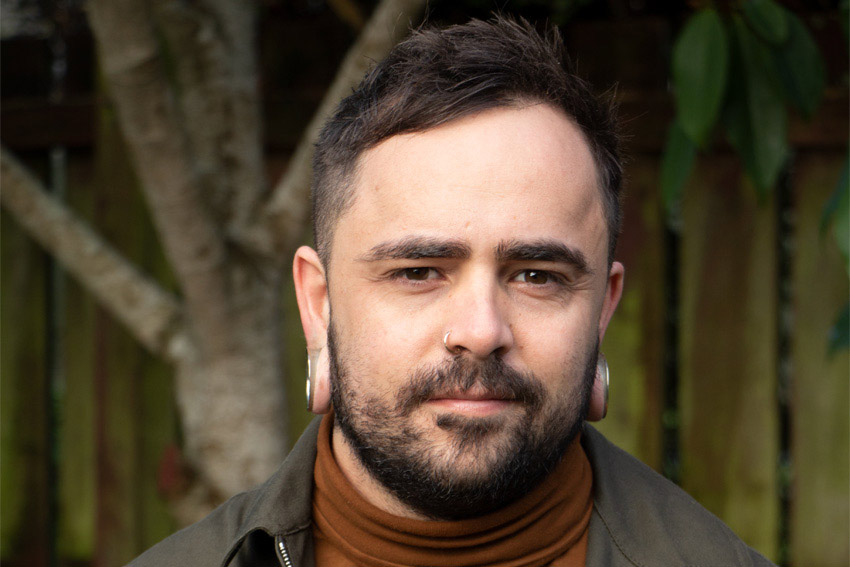Game changer

Nick Jones’ fascination with storytelling started with his childhood love of reading. He aimed to teach English and write novels in his spare time, but while studying at AUT, he learnt his real talents lay in plot and dialogue – and now he’s taken a position with leading Swedish games creator Sharkmob, based in London.
This realisation sent him along the path of screenwriting (under Andrew Bancroft - writer, director, producer and lecturer at AUT) while simultaneously developing his interest in gaming. Nick was always a reader of genre fiction veering towards horror, but latterly fantasy fiction too, which has helped his gaming creations.
“I’m a big horror fan and a big fantasy fan – the two major genres that I end up reading. That is reflected in my work and I’ve been a little bit typecast as a fantasy writer in video games which is funny to me because I didn’t read much fantasy until I started writing fantasy for games.”
His attraction to gaming was obvious from a young age and he has always enjoyed the genre titles, but admits he enjoys most things except racing or sports games - “I play pretty much anything that has a good story - that’s what I’m looking for in a game.”
As he travelled the path of academia his interest in mythology and legends has developed into a passion and a PhD. He taught a course on interactive narrative design and the influence of horror writer HP Lovecraft on storytelling.
From there, an idea developed and a deep dive into folkloric tradition and how that can be used in video game narratives followed. Nick focused on the Benandanti from the Friuli-Venezia Giulia region in northern Italy, an agrarian cult who claimed to fight witches in their sleep to ensure a good harvest.
These stories are echoed all over Europe, he says, and are an illustration of ‘mimetic circulation’ - how concepts are exported and adapted, how they’re reinterpreted and changed over time. “I looked at the underlying motifs in this tradition. What do these motifs mean and how would you approach using them in the construction of an interactive narrative?”
The foundation for interactive narratives could be attributed to table-top role-playing games like Dungeons & Dragons. But Nick maintains the interactive and nonlinear narratives can be traced all the way back into our distant past with the use of tarot cards, the I Ching and other similar oracle texts.
“These require user input and interpretation to create a narrative and I would argue that they are very early examples of interactive nonlinear narratives.”
Technology has definitely influenced narrative design, Nick says, with incremental advances allowing for more freedom with the story. “One thing I like is when non-player characters (NPCs) in a game start to interact with the world and each other on their own. For example, The Legend of Zelda: Breath of the Wild has a dynamic weather system where, when it starts raining, NPCs will cover their heads and run to the nearest cover, rocks will get slippery and certain animals will come out – these are ways in which the game can interact with itself to create a more realistic and immersive world and is a really exciting approach.”
The freedom to explore this new and exciting area of study has led Nick to his new role, based at London’s Barbican Centre, one of the most senior international appointments for a New Zealand narrative designer. There are many opportunities for designing the future of gaming, says Nick.
“Any new field is exciting to be a part of – you get to come in on the ground floor and shape how things are likely to be for the next several years.”
Read more inspiring alumni stories
This story was originally published in Insight, the magazine for AUT alumni and friends. Read the most recent issue of Insight for more stories of groundbreaking research and great AUT graduates who are making a difference around the world.
